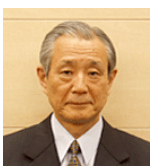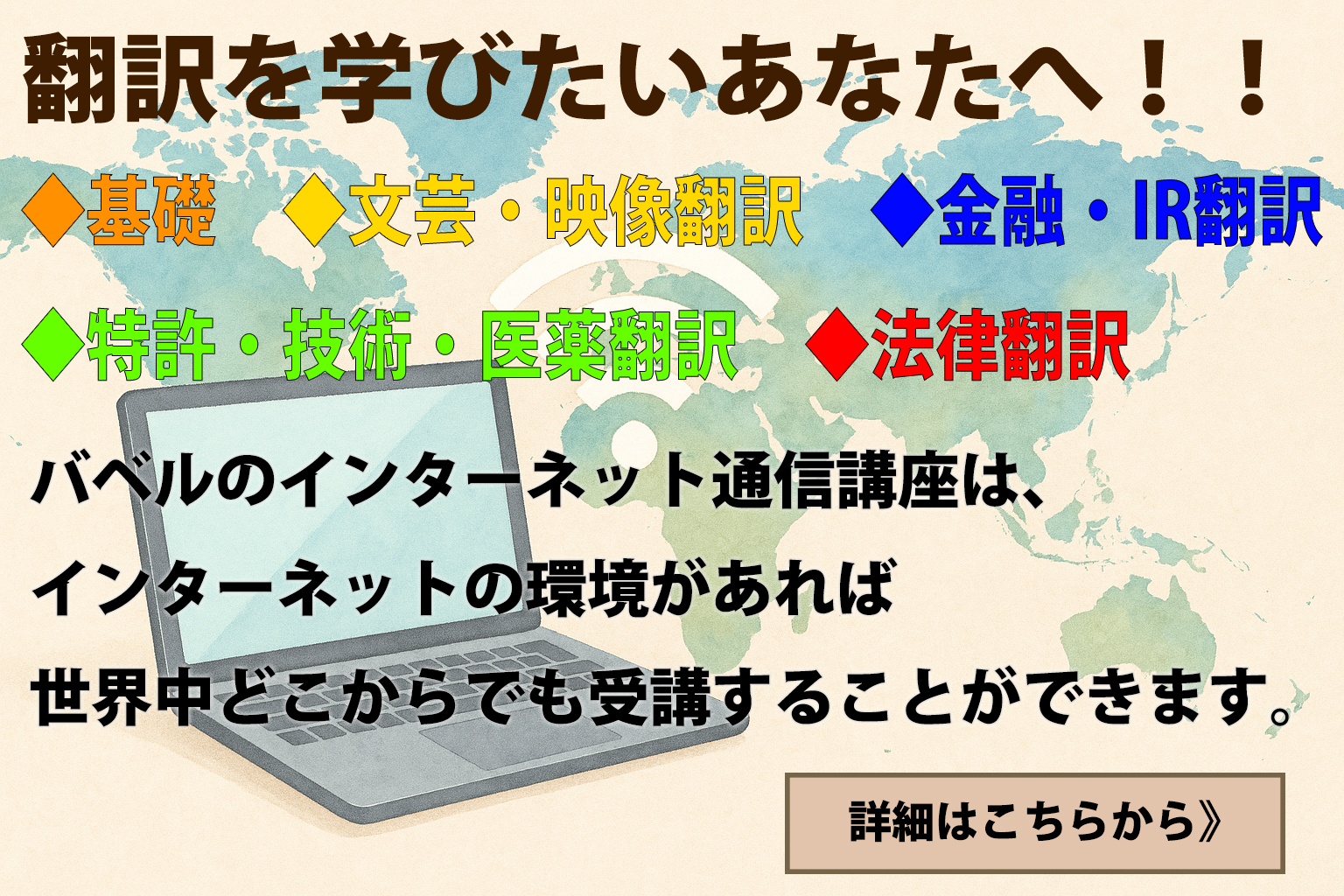2024年1月22日 第332号 World News Insight (Alumni編集室改め) 人種差別、暴動に想う 「日本語が世界を救う、とは言いすぎでしょうか」 バベル翻訳専門職大学院 副学長 堀田都茂樹
今回ご紹介する深い話はカナダのモントリオール大学で25年に渡って日本語を教えてきた金谷武洋氏の「日本語が世界を平和にするこれだけの理由」(飛鳥新社発行)に収められた体験談に基づくものです。
ウォーフ・サピアの仮説をご存知でしょうか。これは、母語、つまり子供の時に家庭で覚えた言葉で、世界の見方が決まる、という仮説です。ここでは、第2外国語として学ぶ言語も学ぶ人の新しい世界の見方を形作る、という話です。
では、日本語とはどんな言語なのか、読者が翻訳者をめざされる方が多いので、本書で紹介されているあるエピソードから始めたいと思います。
まず、NHK教育テレビ「シリーズ日本語」という番組での話で、番組の講師は言語学者の池上嘉彦氏。この番組の中では、川端康成の有名な作品「雪国」の冒頭部分の日本語とE・サイデンステッカー氏の英語を比較することで日本語の特性、英語の特性を知ろうとするものです。
「国境の長いトンネルを抜けると、雪国であった」という日本語とその英訳
「The train came out of the long tunnel into the snow country.」を考察しています。
この原文の日本語を追体験すると、「今、列車はトンネルの暗闇の中を走っているが、私はその車内に座っている。おやおや、だんだん窓の外が明るくなってきたぞ。やっと長いトンネルを抜けるみたいだな。そーら、外に出たぞ。うわー、山のこちら側は真っ白の銀世界じゃないか。雪国なんだ。」
すなわち、時間の推移とともに場面が刻々変化していくのを読者が感じていて、主人公が汽車の中にいて読者の視線も主人公の視線と重なり合い、溶け合っていると言うのです。
これに対して、英訳のThe train came out of the long tunnel into the snow country.は、どのように受け止められるかを、その場に呼んだ英語話者に絵で情景描写をさせています。
全員が上方から見下ろしたアングルでトンネルを描いたと言います。
日本語では汽車の中にあった視点が、英訳では汽車の外、それも上方へと移動しているわけです。
そして、池上氏がこの違いを、日本語には主語がない、しかし英語には主語が必要なのでThe trainをもってきたことにより、日本語には時間の推移、流れがある動画だったのが、時間の流れのない一枚の写真のような英語表現になってしまった、と結論づけていました。
このように、日本語の立ち位置では、「私」は話し手には見えなくなると言います。英語のように常に主語を必要とする言語は、状況から身を引き離す役割があると言います。
すなわち、英語は主語(私)と目的語(相手)を切り離して対立する世界にする、と言います。
例えば、広島の平和公園の中の慰霊碑の碑銘に「安らかに眠ってください 過ちは繰り返しませぬから」と書いてありますが、ここには誰の過ちかは明らかにされていません。ここには私とあなたが共存し、あたかも敵と味方の共存する姿を暗示しているかのようです。
この著書の中では、さらに身近な「ありがとう」、「おはよう」と言ったことばを探り、日本語の本質に迫ります。
日本語の「ありがとう」には話し手も聞き手も、つまり人間が出てきません。それに対してThank youはI thank you.となります。
日本語の「ありがとう」は「有難う」、すなわち、あることが難しいという形容詞。「めったにない」という状況を表現しています。従って、著者は、英語は「(誰かが何かを)する言葉」、日本語は「(何らかの状況で)ある言葉」、としています。
また、英語の「Good morning」は、英語のI wish you a good morning.で、わたしが登場し、この朝がいいものであるようにと、積極的な行為を表現しています。
対して日本語の「おはようようございます」、は二人が「まだ早い」という状況で心を合わせているのです。ふたりはそう共感しているわけです。
すなわち、日本語は共感の言葉、英語は自己主張と対立の言葉と言えそうです。
著者は日本人と出会うことで、また、日本語と出会い、日本語の学習を通じて、学習者の世界観が、競争から共同へ、直視から共視へ、抗争から共存へ変わると言います。
日本語という言葉そのものの中に、自己主張にブレーキがかかるような仕組みが潜んでいるのではないかと言います。
一方で、英語話者はListen to me. 、Let me tell you something. 、 You won’t believe this.など、上から目線で自己主張してくるわけです。
金谷先生は最後の章を「だから、日本語が世界を平和にする!」と結んでいます。
金谷先生は言います。「海外で長年日本語を教えてきた人間の目で日本語を外から見ると、日本語は大変人気がある。」と。もはや日本語は日本列島で日本人にしか話されない「閉ざされた言葉」と言うのは間違っていると言います。
そして、日本語学習者の学習動機は、日本のことが好きとのことです。すなわち、日本の自然、日本の文化、日本人の優しさが評価されているようです。
金谷先生の経験から言うと、日本語を学習すると性格が変わってしまう。攻撃的な性格が温和な性格になると言います。
わたしもバベルの大学院関係者でご主人が日本語が多少ともできる英語話者である場合、喧嘩をしたときに日本語に切り替えると喧嘩は収まることが多いと聞きます。これが所謂、フランス語で言うtatamiser効果ということなのでしょう。
日本語の学習を通じて、学習者の世界観が、競争から共同、直視から共視、抗争から共存に変わっていくと結んでいます。日本語は人種差別とは程遠い、最も平和志向が強い、ロマンチックで幸せな美しい言葉と自信をもって言えると言います。
今、世界の文化の潮流は西から東へ、男性性から女性性へ向かっていると言われます。
日本人が日本語を大事にして、日本語を世界に普及していくことが世界に調和をもたらしていくことは疑いようがないように思います。
【英語訳】
Japanese will Save the World
In this article, I’d like for us translators working in Japanese and English - who need to place utmost importance on Japanese - to remove the stereotypes we have from learning Japanese in school in considering Japanese and English. The weighty issues I’ll bring up in this article are based on the experiences Montreal University Japanese professor of 25 years Takehiro Kanaya wrote in his book, "These are the Reasons why Japanese Makes the World Peaceful" (published October 11, 2018 by Asuka-Shinsha).
Have you heard of the concept of linguistic relativity, also known as the Sapir-Whorf hypothesis? This is a hypothesis that a person’ native language – the language they learned as a child in their family – shapes how that person views the world. Accordingly, people that learn a second language also form a new way of viewing the world based on the influence of that second language.
Although I won’t follow exactly the same order professor Kanaya does in his book, since many of you readers are aspiring translators, I’d like to start off by considering various episodes in the book to look at what kind of language Japanese is.
First, there’s the story of NHK educational TV program Series Japanese, whose program instructor is the linguist Yoshihiko Ikegami. In this program, instructor Ikegami uses a comparison of the introduction of the famous book Snow Country by novelist Yasunari Kawabata in both Japanese and in English (translated by Edward George Seidensticker) to show the characteristics of Japanese and English.
Instructor Ikegami looks as the following is a translated sentence into English from the book: “The train came out of the long tunnel into the snow country” (the original Japanese is 国境の長いトンネルを抜けると、雪国であった.)
Reconsidering the original text in Japanese, one could paraphrase as follows: “Now, the train is running through the darkness of the tunnel, and I am sitting within the train. Look, it’s starting to get brighter and brighter outside the window. It looks like the train is about to make it through the tunnel. Now the train has left the tunnel. My goodness! The mountains on this side are a pure white world. I’ve entered the snow country!”
In other words, the reader senses the scene changes from moment to moment along with the transition of time. The main character is on the train and the reader sees what the main character sees; both the reader and main character seem to blend into each other.
English readers in the program were asked to give a description of the scenery based on the English translation “the train came out of the long tunnel into the snow country” to see how those readers understood the scene.
All English readers reportedly described the scene from an angle looking down from above. Although in Japanese the viewpoint had been from within the train, it switched in English to being outside the train and looking down from above.
Instructor Ikegami concluded from readers’ responses that the difference was that in Japanese there’s no subject in the sentence, but in English a subject is necessary so “the train” is used in the sentence. In doing so, the scene that possessed a transition and flow of time in Japanese turned into a single snapshot without the flow of time when expressed in English.
Instructor Ikegami explained that in the positioning in Japanese, one is no longer able to be seen by the narrator. In other words, in languages such as English that always require a subject, this subject serves to create a distance from the situation at hand. Instructor Ikegami says that what this means is that English separates the subject (“I”) and the object (the other party) and places them in a polarized world.
For example, the inscription on the monument in Hiroshima Peace Park reads, “let all souls here rest in peace, for we shall not repeat the evil.” This phrase does not make clear whose evil (literally “mistake”) it was. The inscription seems to suggest that you and I coexist, and that it’s as if the enemy and ally live in a state of coexistence.
In his book, Takehiro Kanaya also looks at the familiar words “arigato” (thank you) and “ohayo” (good morning) in defining the essence of Japanese. In Japanese, the word “arigato” is directed towards no person – there is no speaker or listener implied. In contrast, the words “thank you” are actually “I thank you.”
The Japanese “arigato” is spelled using the kanji 有難う, an adjective that means something is difficult. It describes the situation of “something that is rare.” Accordingly, Kanaya states that English is a language where “someone” does “something,” while Japanese is a language where “there is some sort of situation.”
The Japanese word “ohayo” (good morning) is, “I wish you a good morning” in English. “I” is part of the phrase, and it continues with wishing that the morning be a good one, depicting an enterprising action. In contrast, the Japanese word “ohayogozaimasu” brings together the thoughts of the two in question given the condition that “it’s still early.” This shows that the two empathize with each other. In other words, one could say that Japanese is a language of empathy, while English is a language of self-assertion and opposition.
Kanaya states that when one meets Japanese people or studies the Japanese language, that person’s world view changes from one of competition to cooperation, from directly viewing others to viewing together, and from rivalry to coexistence. Within the Japanese language itself, it seems that there is a sort of mechanism that puts a halt to self-assertion.
On the other hand, English speakers seem to almost talk down to their listeners as they assert themselves with phrases like “listen to me”, “let me tell you”, or “you won’t believe this.”
Author Kanaya concludes his book with the chapter titled “that’s why Japanese will make the world peaceful!” He states the following: “Those that have taught Japanese for many years overseas say that Japanese is a very popular language.”
According to the Overseas Japanese education Agencies Survey conducted every three years by The Japan Foundation, data from the year 2014 shows that there are 16,167 agencies that implement Japanese instruction in 137 countries and regions outside Japan, while the total number of instructors is 64,041 with 3,651,715 learners. Kanaya points out that it’s incorrect to say that Japanese is a “closed off language” or “dying language,” spoken only by the Japanese in the Japan archipelago.
Furthermore, the desire for Japanese language learners to learn Japanese is because they like Japan. Namely, they esteem Japan’s nature, culture, and the gentleness of the Japanese people.
Kanaya states from his experience that when one learns Japanese their personality changes. Their personality shifts from being more aggressive to mild.
In my interactions with people I come into contact with at BUPST, especially for women whose husband is a native English speaker who can speak some Japanese, when they switch to Japanese during a fight oftentimes their quarrel subsides. This must be the so-called “tatamiser effect” – a word coined by the French that means to become Japanese-like.
Kanaya concludes that, through learning Japanese, learners’ world view changes from being competitive to cooperative, from directly viewing others to viewing together, and from rivalry to coexistence. He says one can confidently state that Japanese originally is a very peace-oriented, romantic, happy, and beautiful language.
Finally, Kanaya concludes with the following:
1. There are a growing number of people who want to learn Japanese.
2. Those who experience Japan like Japan even more, and become what’s known as “Japanophiles” or people that become important supporters of Japan.
These two points are undeniable facts.
It’s said that currently the trend in world culture is from West to East, and from men to women. I firmly believe that Japan should be confident but also needs to have a maternal volition and use Japanese to bring harmony to the world.



























